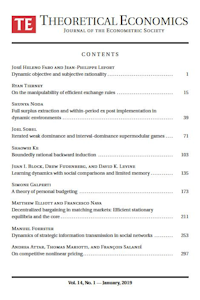
Dziubinski, M. and Goyal, S.
How do you defend a network?
Theoretical Economics
(1555-7561) (2017)
Abstract: Modern economies rely heavily on their infrastructure networks. These networks face threats ranging from natural disasters to human attacks. As networks are perva sive, the investments needed to protect them are very large; this motivates the study of targeted defence. What are the `key' nodes to defend to maximize functionality of the network? What are the incentives of individual nodes to protect themselves in a networked environment and how do these incentives correspond to collective welfare? We first provide a characterization of optimal attack and defence in terms of two classical concepts in graph theory: separators and transversals. This characterization permits a systematic study of the intensity of conflict (the resources spent on attack and defence) and helps us identify a new class of networks-windmill graphs-that minimize conflict. We then study security choices by individual nodes. Our analysis identifies the externalites and shows that the welfare costs of decentralized defence in networks can be very large.
Keywords: Intensity of conflict, Windmill graph, Networks, Defence, Decentralization
JEL Codes: D10, D80, C70
Author links: Sanjeev Goyal
Publisher's Link: http://dx.doi.org/10.3982/TE2088 ![]()
Open Access Full Text: https://www.repository.cam.ac.uk/handle/1810/253326
Cambridge-INET Working Paper Version of Paper: How to Defend a Network?, Dziubinski, M. and Goyal, S., (2014)
